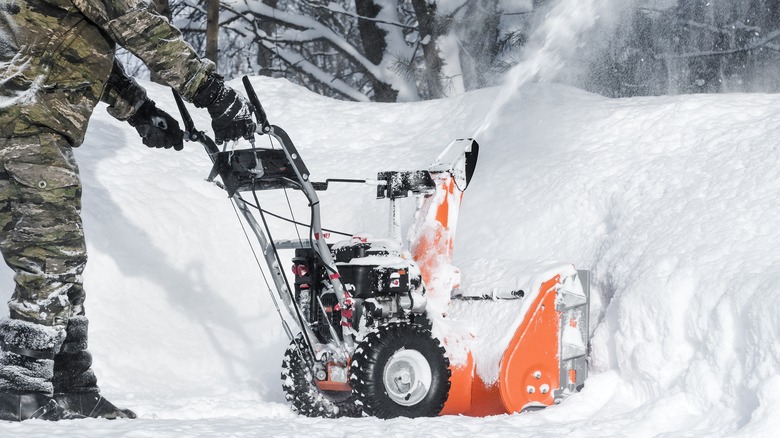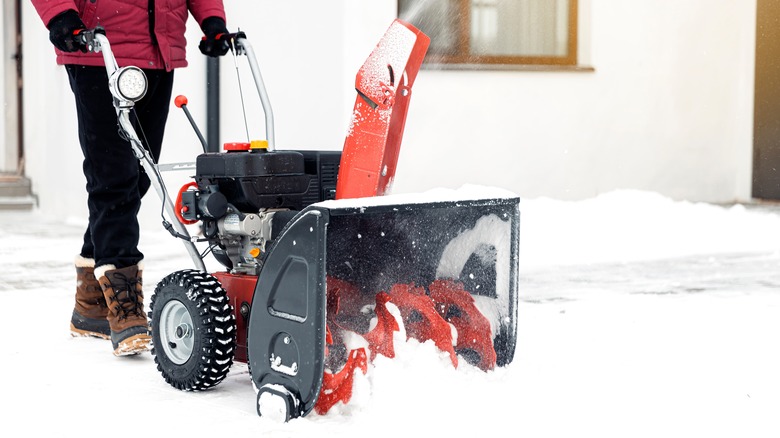Get Winter Tools Ready To Use With A Pre-Season Snowblower Check-Up
As the colder months approach, preparing your snowblower for winter can save you time and hassle when the first snow hits — which, these days, can be unpredictable. A thorough pre-season check-up and ongoing maintenance will ensure that your snowblower is in prime condition to handle snow removal efficiently.
Start by inspecting all visible parts for signs of wear or damage. If any of these parts are cracked, rusted, or in any way decayed, it's best to replace them before heavy use. You should inspect belts, cables, and shear pins, as worn or damaged ones could cause your snowblower to malfunction. Be sure to have additional shear pins on hand throughout the winter. These pins connect the auger to the auger shaft and are designed to break to prevent gear damage. Check tires and tracks to make sure they are properly inflated. If they need air, you can use something as simple as a bike pump.
The essentials: oil, gas, and lubrication
As you enter a new season of use, your oil should be changed, as moisture was most likely introduced during the off-season, causing contamination. When it comes to gas, you will also want fresh, clean fuel. The gasoline used in the U.S. is mixed with ethanol and only has a shelf life of a few months. Adding a fuel stabilizer extends gasoline life for several years. Make sure to date fuel when it is pumped, and store it in an airtight container in a cool environment away from the sun or ignition sources for best results. If you need to dispose of old gasoline, be sure to do it safely.
Additionally, snowblowers have several moving parts that should be lubricated for smooth operation. Apply a high-quality lubricant designed for cold weather, like lithium grease, to prevent it from thickening or freezing in extreme temperatures. Sand and paint any chipped surfaces so they don't further degrade.
After completing these steps, start up your snowblower and let it run for a few minutes to check for any issues. Additionally, be sure to review your operator's manual to check individual manufacturer recommendations, as they may vary. Lastly, make sure your snowblower runs efficiently all season by avoiding common mistakes, like leaving snow in the machine after use.

